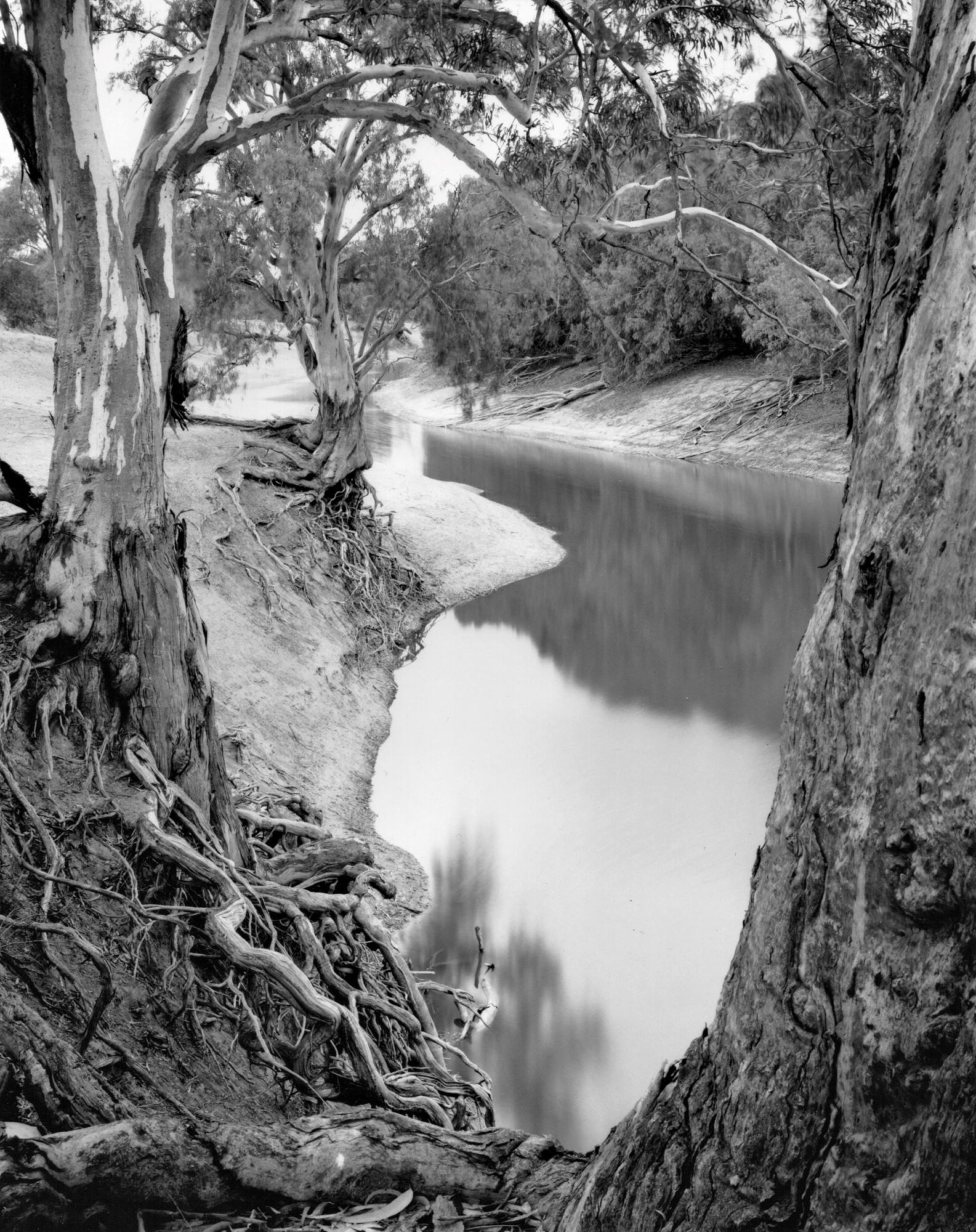
The Inland Sea – Murray White
Even before I owned a camera I had been attracted to rivers. As a teenager I would find any opportunity to launch my homemade kayak, built from a plan detailed in a 1970s Popular Mechanics magazine. (For those a little younger than I, that was a special interest publication which appealed to mechanically minded people, and for those even younger, the text in that publication was printed on paper.) A brief affair with fly fishing and a longer term appetite for bush camping maintained the river visits. It is an activity that I enjoy to this day.
Outback rivers have long held a particular fascination for me, and when I began writing for 4WD and outdoor magazines, became destinations in their own right. The concept of following a river from source to end seemed to be just as interesting to readers as it did for me as the traveller. I photographed these journeys made either up or down river on medium format transparency film for many years, before making the transition to B&W film only.
So in the last few years I have revisited some of those memorable destinations with a 4 x 5 Ebony view camera and a medium format Mamiya rangefinder camera, to look at their character in a monochromatic light. These slow flowing and seemingly timeless bodies of water are almost synonymous with and perfect subjects for a view camera. They effortlessly cruise through an environment blessed with easy access, mostly windless days and often very stable blue sky lighting.
Some river access points are located virtually right next to the road, and those using 8 x1 0 (or larger) formats will find much pleasure racking out their bellows next to one of these quintessentially Australian waterways. With cloudy skies being the exception more than the rule, I usually look for tree cover to fill in the sky, rather than just reach for a graduated neutral density filter.
I find it interesting that I rarely include sky when shooting at other destinations across Australia, and Iím at a bit of a loss to explain why I often do out here. Perhaps it has something to do with a growing sense of wide open spaces when touring on the cusp of the outback, or maybe the visual continuity of similar country for kilometre after kilometre leads me to believe that there is no other hidden agenda waiting to be prised from the shadows. It could be just that this country feels exactly as Henry Lawson and Banjo Paterson would have us believe, and a classical capture is not only entirely in keeping with that traditional imagery, but its authenticity relies upon a complete picture.
A network of public access roads follow these rivers, sometimes quite closely, but are in many cases located on station leasehold country. While private vehicle travel is permitted along the roadway, most river access is limited to bridge crossings, national parks and other pockets of public land adjacent to the waterways. Permission from the station manager is needed to leave the roadside reserve and travel further afield.
I have found most landholders quite obliging if a prior request for access is made, although it will depend on current and planned station activity. If permitted, visitors will be asked to follow mostly commonsense rules: no shooting (although cameras are OK!), no dogs, leave gates as found, don’t disturb the stock and some camping restrictions like avoiding stock watering points. In the past I have sent station managers a mounted print from something photographed at their property as a thankyou for their hospitality.
Most public road access along the outback rivers is suitable for conventional vehicles with care, although robust tyres and the underbody clearance to cope with rough roads are recommended, and at times 4WD is essential. Camping is possible in the many towns, in national parks and low key overnight stops at various bridges and other informal bush sites. Some homesteads provide accommodation, while most outback pubs make an overnight stop quite an experience.
The accompanying prints are a combination of 4 x 5 and rollfilm captures, taken at five of Australia’s most well known inland rivers. All of the images have been made at times when water levels have been low, indeed the Darling River was visited in drought conditions when water flow had stopped.
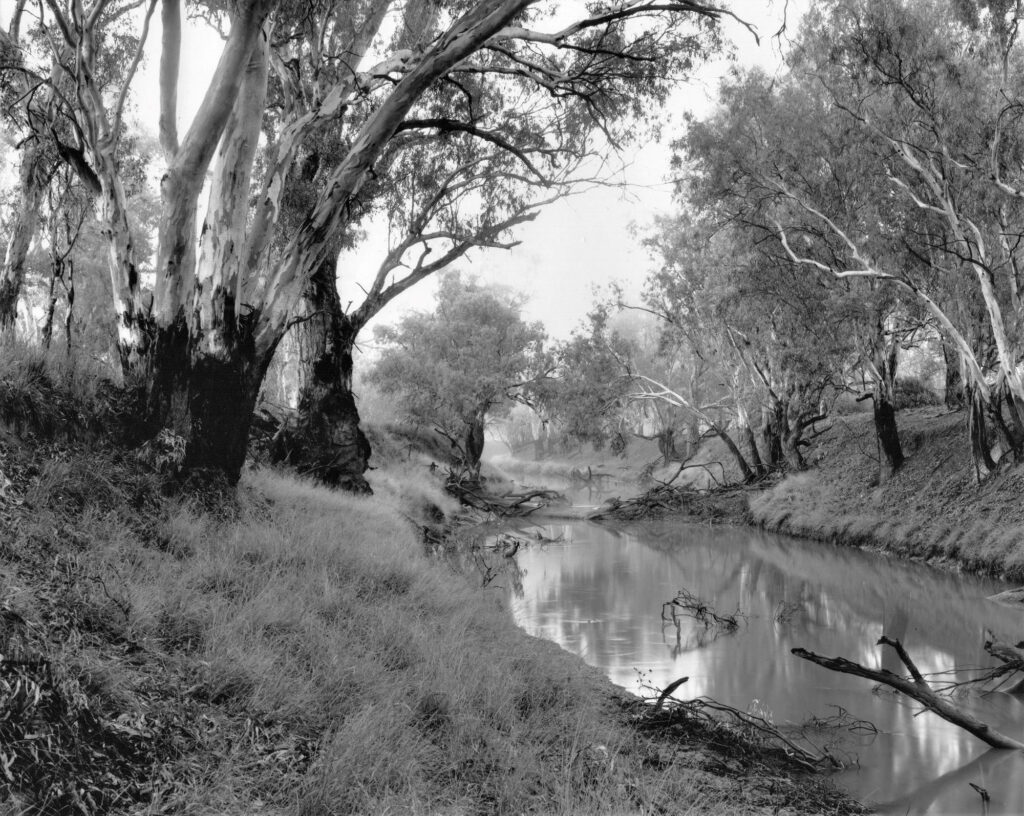
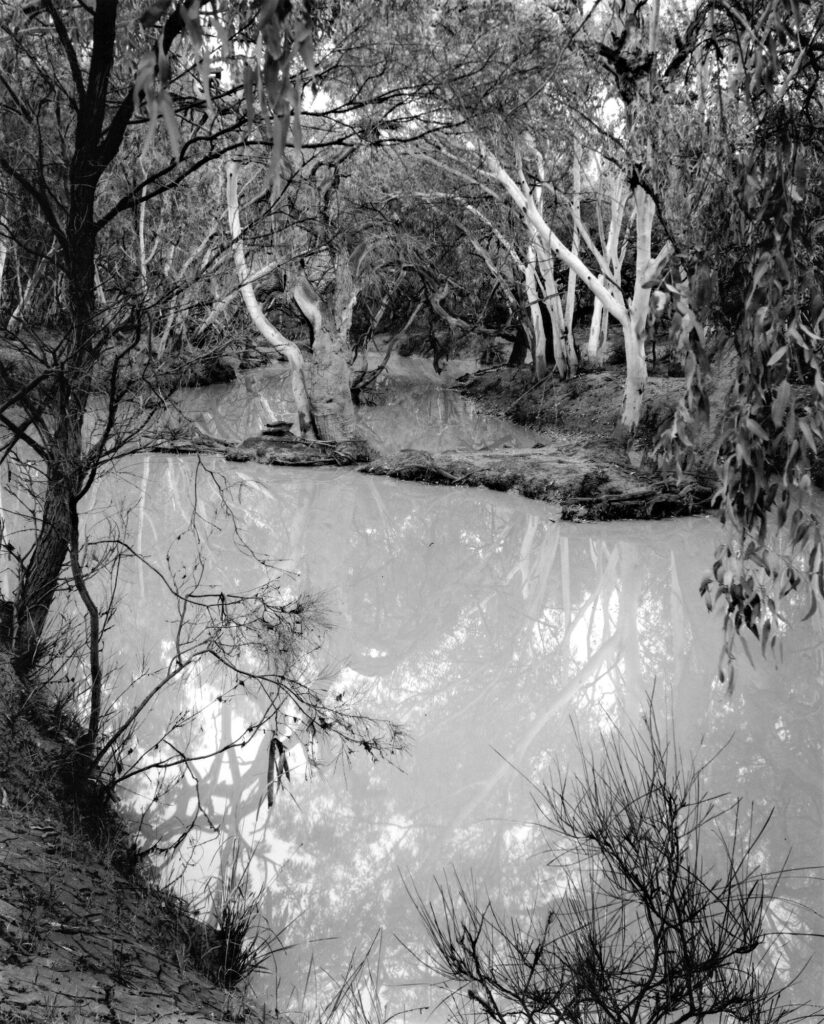
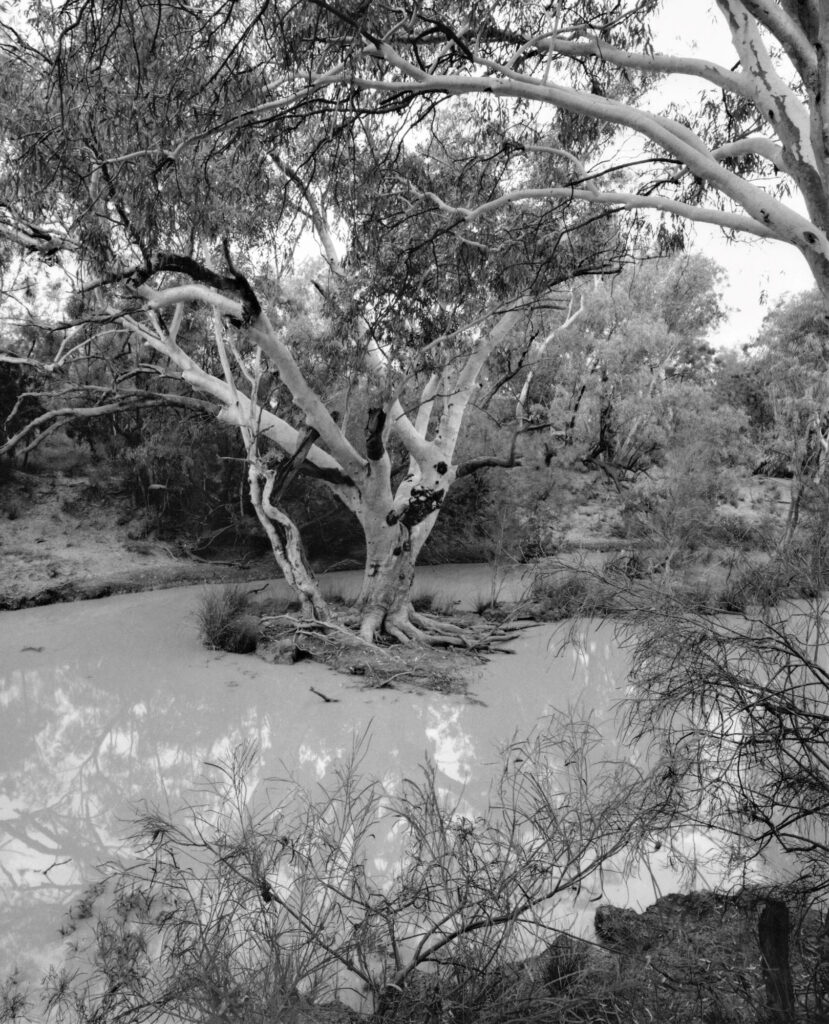
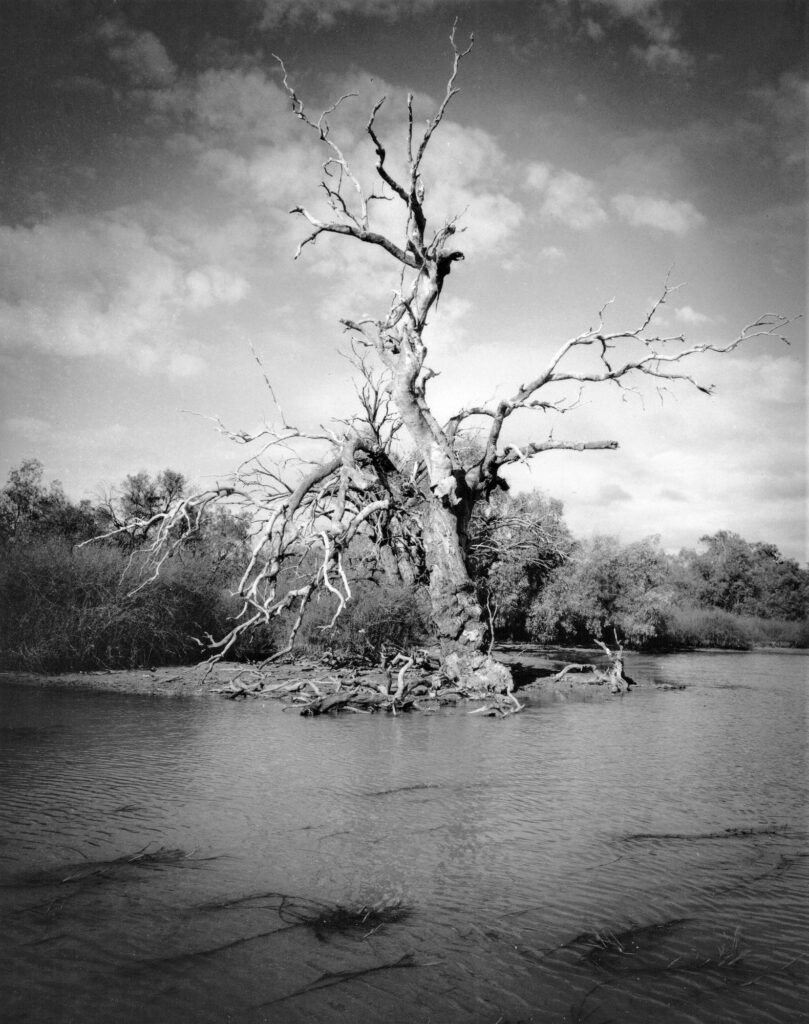




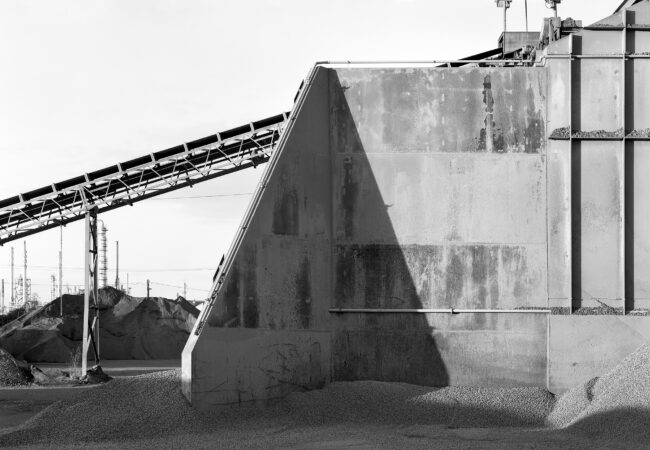
Golly, Murray you sure do get around the country. There is lots of traveling involved in the making of these photos.
Gary, travelling the outback has given me great pleasure for 40 years now. If only I had another 40 in the tank……